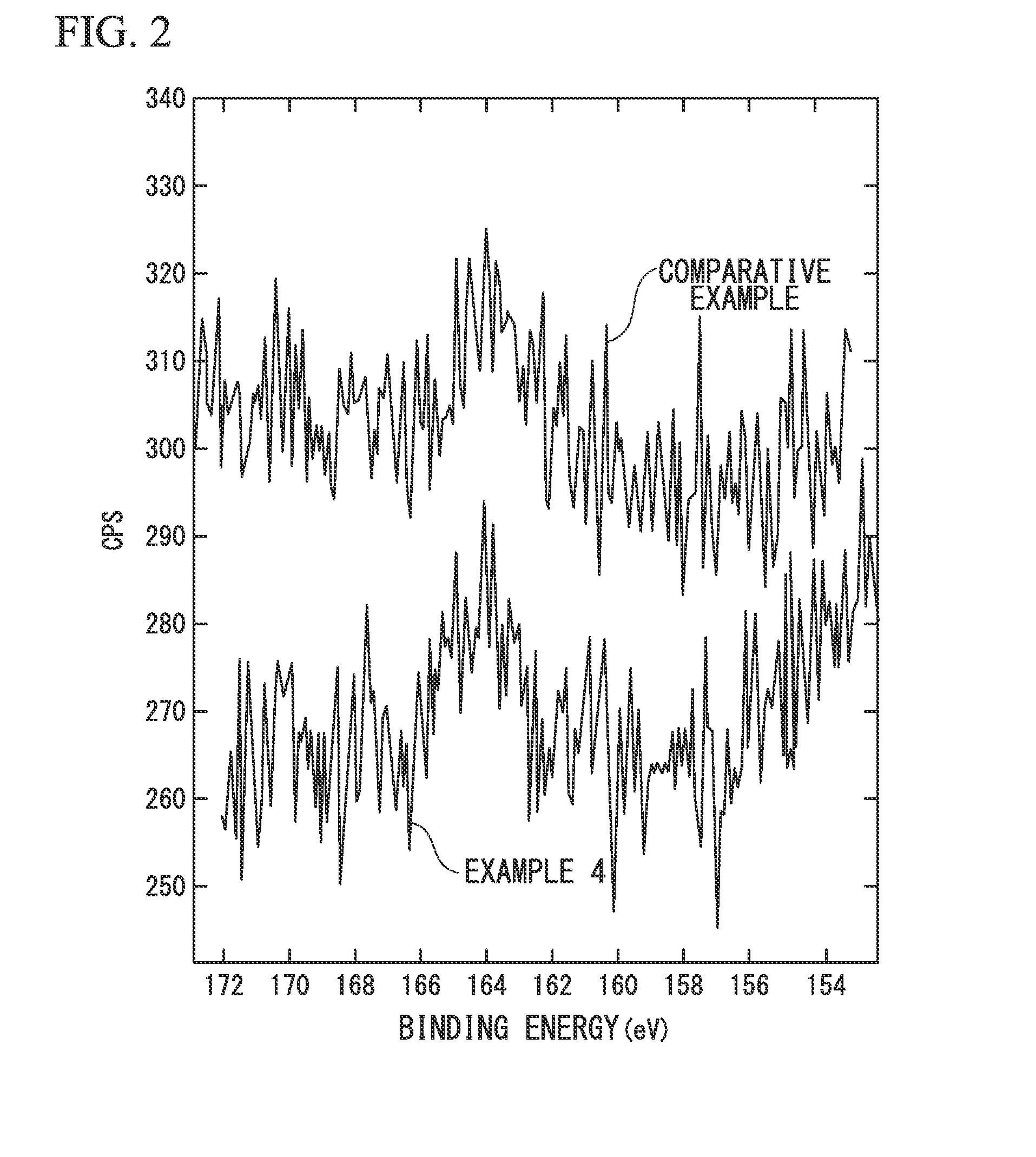Electrode-active material, electrode material, electrode, lithium ion battery, and method of producing electrode material
a lithium ion battery and electrode-active technology, applied in the field of electrode-active materials, electrode materials, electrodes, lithium ion batteries, can solve the problems of insufficient electron conductivity and diffusibility of li inside particles to meet the requirements of the market, and achieve the effects of improving electron conductivity, sufficient electron conductivity, and improving the conductivity of li inside particles
- Summary
- Abstract
- Description
- Claims
- Application Information
AI Technical Summary
Benefits of technology
Problems solved by technology
Method used
Image
Examples
example 1
Preparation and Evaluation of Electrode Material
[0137]4 mol of lithium acetate (LiCH3COO), 2 mol of iron sulfate (II) (FeSO4), and 2 mol of phosphoric acid (H3PO4) were mixed with 2 L of water such that the total amount was 4 L. As a result, a uniform slurry mixture was prepared.
[0138]Next, this mixture was placed in a pressure-resistant closed container having a volume of 8 L, followed by hydrothermal synthesis at 120° C. for 1 hour.
[0139]Next, the obtained precipitates were washed with water to form a cake-shaped precursor of an electrode-active material.
[0140]Next, 150 g (in terms of solid content) of the precursor of the electrode-active material and 5.5 g of polyethylene glycol as the organic compound were dissolved in 150 g of water, and this solution was mixed with 500 g of zirconia balls having a diameter of 5 mm as the medium particles, followed by dispersing with a ball mill for 12 hours. As a result, a uniform slurry was prepared.
[0141]Next, this slurry was sprayed and dr...
example 2
[0153]An electrode material (A2) of Example 2 was obtained with the same method as that of Example 1, except that the obtained granulated body was calcined in a mixed gas atmosphere (5 vol % of H2-95 vol % of N2) at 700° C. for 1 hour.
[0154]The pressed powder resistance (Ω·cm) of the electrode material (A2) was 5 Ω·cm when measured with the same method as that of Example 1.
[0155]Similarly to the case of Example 1, when the electrode material (A2) was observed using a scanning electron microscope (SEM) and a transmission electron microscope (TEM), it was found that primary particles aggregated to form secondary particles, surfaces of the primary particles were coated with a carbon thin film, and carbon was interposed between the primary particles. In addition, the electrode material (A2) was a spherical body having an average particle size of 5.8 μm.
[0156]Further, the sulfur (S) contents of the electrode material (A2) satisfied St=650 ppm, Sa1 / St=0.052, and Sa2 / St=0.078 in terms of s...
example 3
[0158]An electrode material (A3) of Example 3 was obtained with the same method as that of Example 1, except that the obtained granulated body was calcined in a mixed gas atmosphere (8 vol % of H2-92 vol % of N2) at 700° C. for 1 hour.
[0159]The pressed powder resistance (Ω·cm) of the electrode material (A3) was 8 Ω·cm when measured with the same method as that of Example 1.
[0160]Similarly to the case of Example 1, when the electrode material (A3) was observed using a scanning electron microscope (SEM) and a transmission electron microscope (TEM), it was found that primary particles aggregated to form secondary particles, surfaces of the primary particles were coated with a carbon thin film, and carbon was interposed between the primary particles. In addition, the electrode material (A3) was a spherical body having an average particle size of 5.3
[0161]Further, the sulfur (S) contents of the electrode material (A3) satisfied St=625 ppm, Sa1 / St=0.059, and Sa2 / St=0.081 in terms of sulfu...
PUM
| Property | Measurement | Unit |
|---|---|---|
| pH | aaaaa | aaaaa |
| temperature | aaaaa | aaaaa |
| particle size | aaaaa | aaaaa |
Abstract
Description
Claims
Application Information
 Login to View More
Login to View More - R&D
- Intellectual Property
- Life Sciences
- Materials
- Tech Scout
- Unparalleled Data Quality
- Higher Quality Content
- 60% Fewer Hallucinations
Browse by: Latest US Patents, China's latest patents, Technical Efficacy Thesaurus, Application Domain, Technology Topic, Popular Technical Reports.
© 2025 PatSnap. All rights reserved.Legal|Privacy policy|Modern Slavery Act Transparency Statement|Sitemap|About US| Contact US: help@patsnap.com


